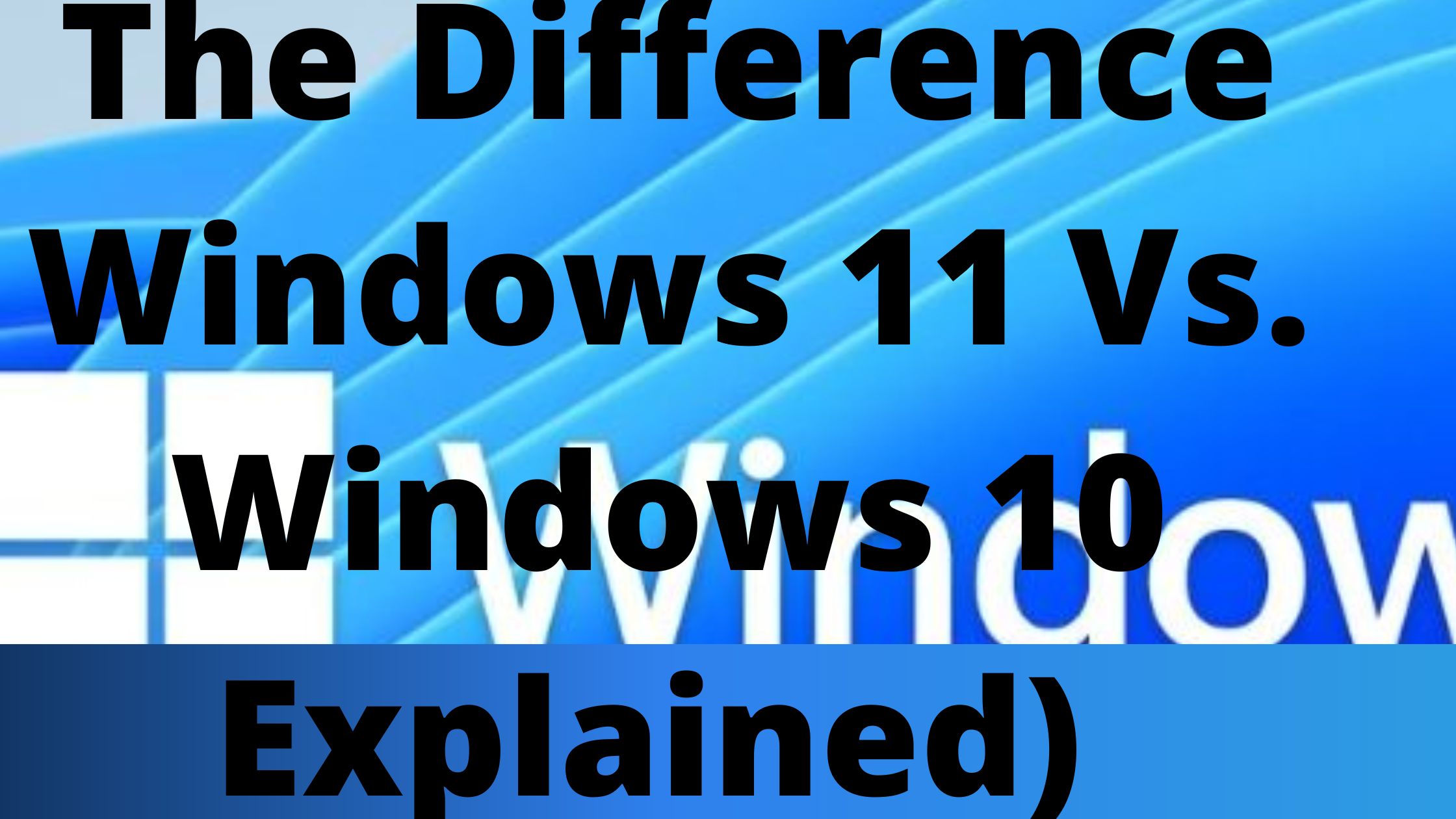What is The Difference Between Windows 11 and Windows 10?, We’ll talk about the differences between Windows 11 and Windows 10 in this article as well everything you need to know about how to go by when upgrading.
About Windows 10
After Windows 8.1, Windows 10 was released on July 15, 2015. It is the most recent edition of Windows. Microsoft Edge, a brand-new browser from the company, debuted with Windows 10.
Windows 10 was primarily created with touch-based functionality and features for multitasking similar to the Android operating system.
Users of Windows 7 or Windows 8 could simply update their computers for no cost to the most recent version of Windows 10 through software updates.
Microsoft Windows 10 needs systems with at least 2GB RAM, 32GB of storage, and CPUs with more processing capability than the Intel Core I Series 4th generation later to function.
About Windows 11
The most recent release of Microsoft’s operating system is called Windows 11. After the debut of Windows 10 in 2015, it was introduced on June 24, 2021.
The newest version of Windows, which comes pre-loaded on modern computers, can be installed by updating compatible devices. Compared to Windows 10, Windows 11 offers consumers a more fluid and integrated experience.
Microsoft has modeled its approach to making everything connected within a single account only after that of Android or macOS.
Microsoft Windows 11 requires more powerful hardware to function, including CPUs with more processing power than the Intel Core I Series 8th generation, AMD Zen+ series, and later, as well as a minimum of 4GB RAM and 64GB storage. Furthermore, it needs TPM 2.0 for reliable trusted platform modules.
Key variations between Windows 10 and Windows 11 include:
-
Design and interface
Windows 11’s design and interface layout are far more sophisticated and superior to Windows 10’s.
With a variety of multitasking options and a dynamic user interface, Windows 11 primarily aimed to provide Windows devices with an Android-like experience.
However, Windows 11 elevates it by introducing a macOS feel. Users can enable more customization features with Windows 11. A new start button, icons, and gestures are also present.
-
Android app integration
Users can now run Android applications on Windows laptops thanks to Windows 11.
The Windows store and the Amazon app store have linked so that consumers can use their Android applications on PCs.
For efficient synchronization methods, this enables customers to run the same applications they currently use on their phones on their PC.
The Apple ecosystem was built using the same functionality that Apple uses on Mac computers.

-
Improved virtual desktop support
For the support of virtual desktops, Windows 11 will add more deployment and editing tools. Now, users have nearly unlimited access to the files on their devices.
By actually accessing the computer from another device, it enables people to use the one that is physically far from them.
-
Improved widgets
Since they originated with Windows 7, widgets are not new in Windows 11. However, a new widgets tab in Windows 11 offers a variety of information in the form of interactive cards, including news, weather, maps, images, and music.
-
Enhanced touchscreen, speech, and pen support
Additionally, Windows 11 can be utilized with touch, voice, or styles. In Windows tablets, it offers better support for touch and stylus support. PCs may also use the tablet mode for the touch and stylus modes.
-
Gaming Support
Direct Storage and Auto HDR, two technologies specifically designed for gaming on Windows 11, enhance graphics quality.
Additionally, Windows 11 includes a brand-new Xbox app that enables users to enjoy the best Microsoft-made games. Xbox also enables users to broadcast their gaming on websites like YouTube and Twitch.
-
General performance
Significant speed upgrades from Windows 10 are present in Windows 11. It improves background system app optimization and guarantees long battery life during peak performance.
-
Teams as a replacement For Skype
The primary video conferencing program in Windows 10 was Skype, which required a separate installation.
However, Teams has taken the place of Skype in Windows 11 and is now the default program. With Windows 11, Microsoft Teams is tightly integrated and operates more efficiently than before.
-
Microsoft Store redesign
On Windows 11, the new Microsoft Store was released, and it contains a whole new selection of software and games.
There are now Android applications available because of the interaction with the Amazon store. Its brand-new look mirrors that of the Mac Store.
-
Snap layouts
Snapping the window layouts is another new feature in Windows 11. In this edition, we may now perform a variety of multitasking functions and modify the application layouts.
Differences Between windows 10 and windows 11
| On June 24, 2021, Microsoft introduced Windows 11. | On July 15, 2015, Microsoft unveiled Windows 10. | |
| The functionality of Windows 11 is modeled on that of macOS. | The functionality of Windows 11 is based on Android. | |
| Apps for iOS, Android, and Windows can now be installed on Windows. | Only Windows programs from the shop can be installed. | |
| Only TPM 2.0-equipped devices do Windows 11 run. | Only devices with TPM 1.2 or higher can run Windows 10. | |
| Only computers with a minimum of 4GB RAM and 64GB of storage can run Windows 11. | Only devices with a minimum of 2GB RAM and 32GB storage can run Windows 10. | |
| Only computers with CPUs from the AMD Zen+ series or Intel Core I Series 8th generation can run Windows 11. | Only devices with Intel Core I Series 4th generation series processors or higher can run Windows 10. | |
| The Start menu has been moved to the middle of the screen in Windows 11, however, this can be modified. | The Start menu has been moved to the left of the screen in Windows 10. | |
| Microsoft Teams is already a part of Windows 11, therefore there is no need for a separate app. | Microsoft Teams must be installed individually because it is a separate component of Windows 10. | |
| Faster unlock times and more effective performance are aspects of Windows 11. | These features were first released in Windows 10, therefore they weren’t as useful as those in Windows 11. | |
| Up until the release of the new version, Microsoft will support Windows 11. | In 2025, Microsoft will stop providing security updates for Windows 10. |
Final thought
In general, there are not a lot of differences between windows 10 and windows 11.
There are many people who prefer using Windows 10 because of its easy of use. All the two types of windows are good, choosing either of them is just a personal choice.
Related article:
Why Does Microsoft Release Windows 11? (Explained)




